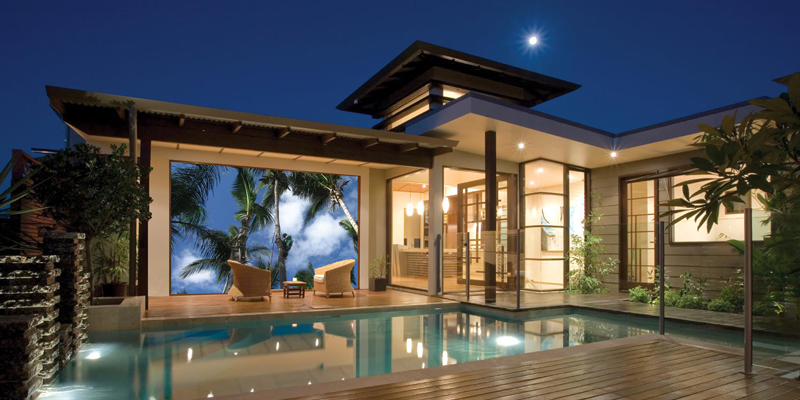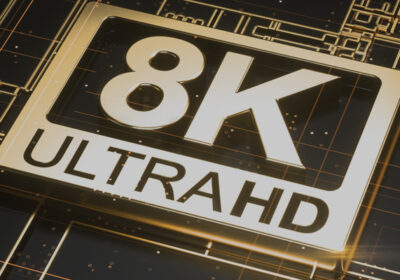When looking at the role of products in an audio visual system, none is more misunderstood than the projection screen.
Far too often the screen is seen as a necessary accessory devoid of any technology and as a product where any solution will do. Of course nothing could be further from the truth. Sure, there are cheap screens out there that simply employ off the roll materials without any form of engineered optical properties in the same way that there are cheap speakers assembled from non-descript components that no one would consider installing into their system. At the end of the day, the role of the projection screen is to present a flat planar surface and direct the projected light back towards the viewing audience while itself getting out of the way. A quality projection screen should act as a window to the world, be invisible to the viewer and not impart its own “personality” onto the projected image.
Gain and color
As with any form of technology, projection screens need a reference to be measured against and with projection screens it is gain. The reference for gain is the chalky substance, magnesium carbonate. It is said to have a gain of 1.0 and is considered a full Lambertian diffuser. That is, any light that falls upon its surface will be diffused evenly in all directions off the surface. So no matter what angle you view this sample on, its brightness will be the same. And that is all light including both projected light and reflected or ambient light. Any screen surface can be tested against this reference and a screen that is brighter than the reference will have a gain greater than one and one being less bright will have a gain of less than one (but greater than zero).
When editing their movies during post-production and grading the footage so that the colours match from scene to scene, Hollywood studios require a screen surface that is totally neutral and doesn’t impart any artefact of its own onto the image. The majority of them use Stewart Filmscreen’s Snomatte 100, a true unity gain 1.0 white surface that has long been recognized as the industry reference for image performance. Its optical coating imparts no sheen on the surface and it is utterly neutral in its performance. Apart from using such a screen, the studios also employ a totally black room comprising of black walls, floors and ceilings to ensure that there are no internal room reflections that will affect the image being worked upon.
So in an ideal world, to get the same image performance as a Hollywood studio, any projection room would be totally black apart from the screen to maximize image quality. In the real world however this is impractical as a totally black room is not only foreboding but is also aesthetically unappealing. So while most rooms can be darkened, they are typically not black enough to employ a unity gain white screen as there will usually be something in the room that will cause a glow or cross reflections. So to counter these we need to look at a surface that will be less affected by these artefacts.
Adding gain to a screen surface by employing optical elements also makes the screen more directional. So when we project upon the screen, more of the light is redirected back into the viewing space and away from the side walls, thus reducing room cross reflections. The more we increase the gain of a screen surface, the more directional the screen becomes and potentially the less uniform it will be. That is one part of the screen will appear to be brighter than other parts of the screen dependent upon where the viewer is seated. The goal is to achieve the optimum balance between screen gain and image uniformity. In a study done in the early 1990s between Stewart Filmscreen and industry imaging expert Joe Kane, it was found that the screen gain achieving the optimal balance between image uniformity and brightness was 1.3. This surface became Stewart’s StudioTek 130 and has since been regarded as the reference surface for home theatre applications in darkened rooms.
In a multi-purpose room where room décor is much lighter than a dedicated theatre, increasing screen gain is not sufficient to tame room reflections. In these instances, a grey based screen becomes beneficial as the grey base automatically lowers the passive black level of the screen, immediately assisting with maintaining black level detail on the screen. The grey base also assists with absorbing room cross reflections, further maintaining on-screen contrast and shadow detail.
As with white screens, grey screens can be optically coated to give the screen a higher gain and desired optical properties in the same way as a white screen. As with a white screen, as we increase gain, we narrow the viewing angle. This reduction in viewing cone can be used to our advantage in a multi-purpose room with cross lighting or higher levels of ambient light. The higher the gain, the less likely the ambient light is to diffuse the surface. If you had a window at 90 degrees to the screen, light from the window will be shed across a higher gain grey screen, having far less impact on the projected image than on a white based screen than where greater diffusion of the ambient light will take place.
A grey based screen will also have a gain inherently lower than that of a similar white screen. For example a matte white screen will have a gain around 1.0 – 1.1 whereas a matte grey screen will have a gain of around 0.7. For example, both Stewart’s reference StudioTek 130 and GrayHawk RS surfaces employ a 30% gain increase over their gain 1.0 and 0.7 base materials. So StudioTek 130 has a gain of 1.3 and GrayHawk RS 0.9 (0.7 x 1.3). So side by side a white screen will always look brighter and whiter than a grey screen but once ambient light starts falling upon the screen, the benefits of the grey base come through fairly quickly. When grey screens were first released into the residential market nearly 20 years ago a common question was “How do you get white on a grey screen?” My typical reply was “How do you get black on a white screen?” The human eye will very quickly adjust to the colour of the screen setting the white level as its reference.
When determining the most appropriate screen for your project, the projection screen should be considered as part of a projection system rather than as a standalone product. When determining the most appropriate screen surface for any project a range of considerations need to be taken into account including the intended screen size, projector being employed in the system, room décor.
A quality screen manufacturer will offer a range of projection surfaces for their products to ensure that the optimal solution is used in the project. To this end, Stewart Filmscreen, a company that has been manufacturing bespoke projection screens for over 70 years for the very companies making the movies that you view at home, has a range of nine front projection surfaces to select from as well as numerous custom surfaces for specialist applications. With their products, a Stewart screen enables you view the movie as intended by the filmmaker.

Watch this space
When watching a movie or television program in your theatre or media room, you are only looking at a single item: the screen. The screen is the final link in determining the quality of the image that you will view. Like speakers and power amplification, a projection screen is a product that is typically purchased once for a system. Unlike content delivery products that change on a regular basis due to technology changes, your projection screen will usually last the life of your theatre. So it only makes sense to invest a bit more in a product that is not only going to provide optimal image quality but will also last for the duration of the theatre. Stewart Filmscreen have long been considered the reference for image quality for projection screens. With every product custom manufactured to specification, you can be sure that you are purchasing the most appropriate solution for your system.
Originally written by Alberto Vangi with input from Paul Kutcher at Stewart Screens for Headlines Magazine




